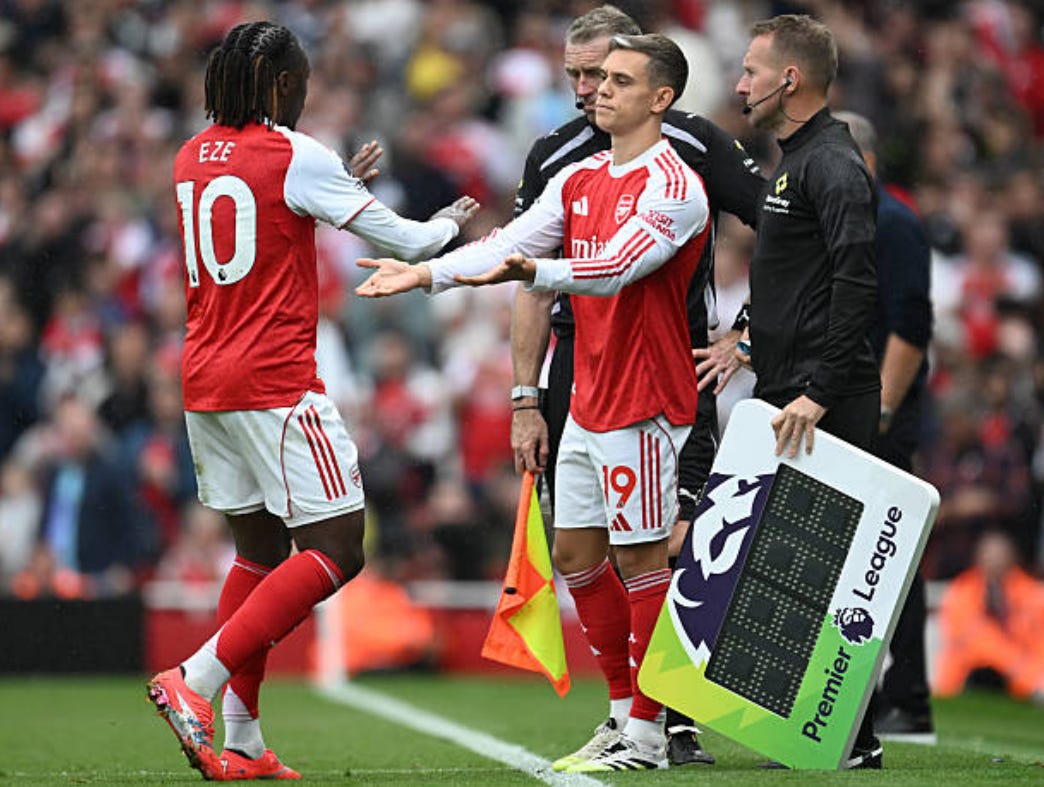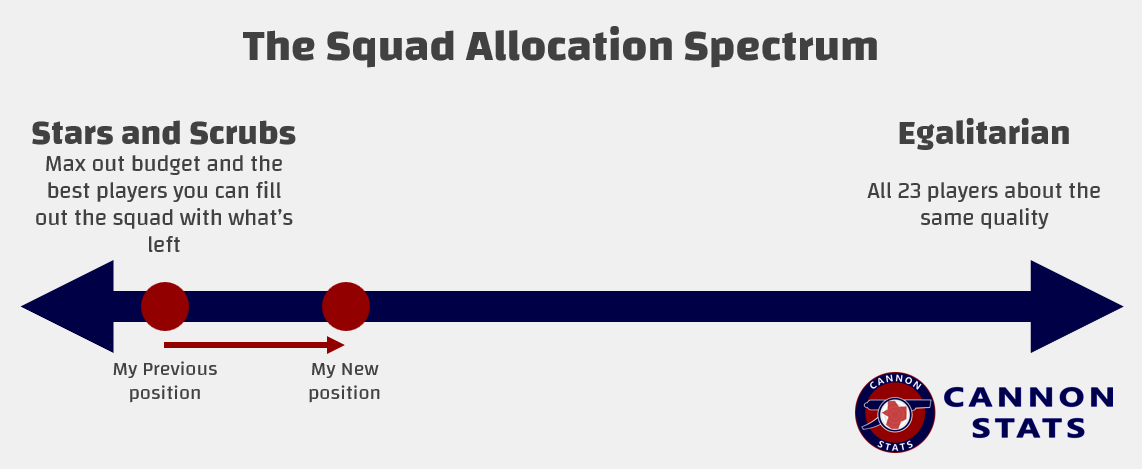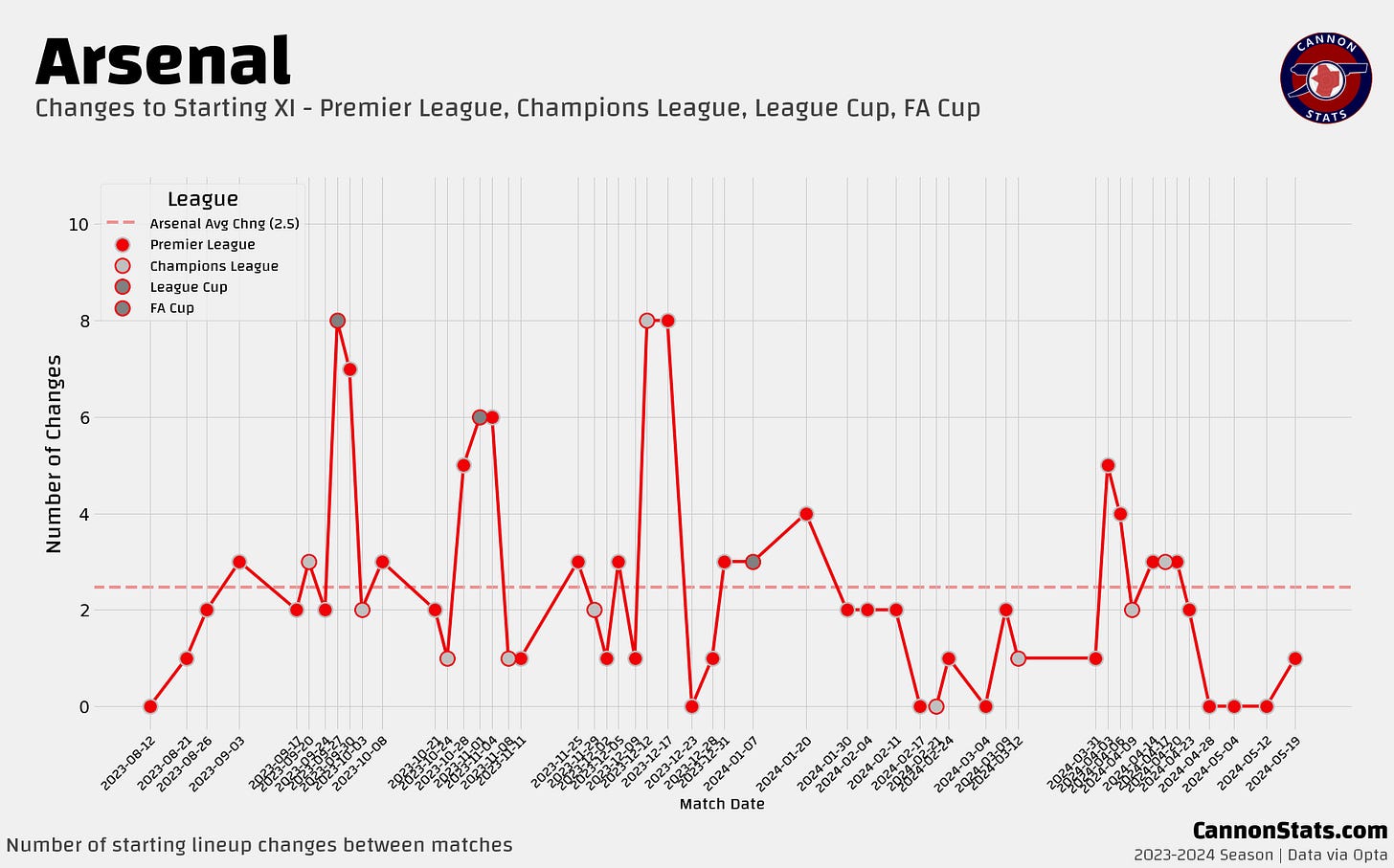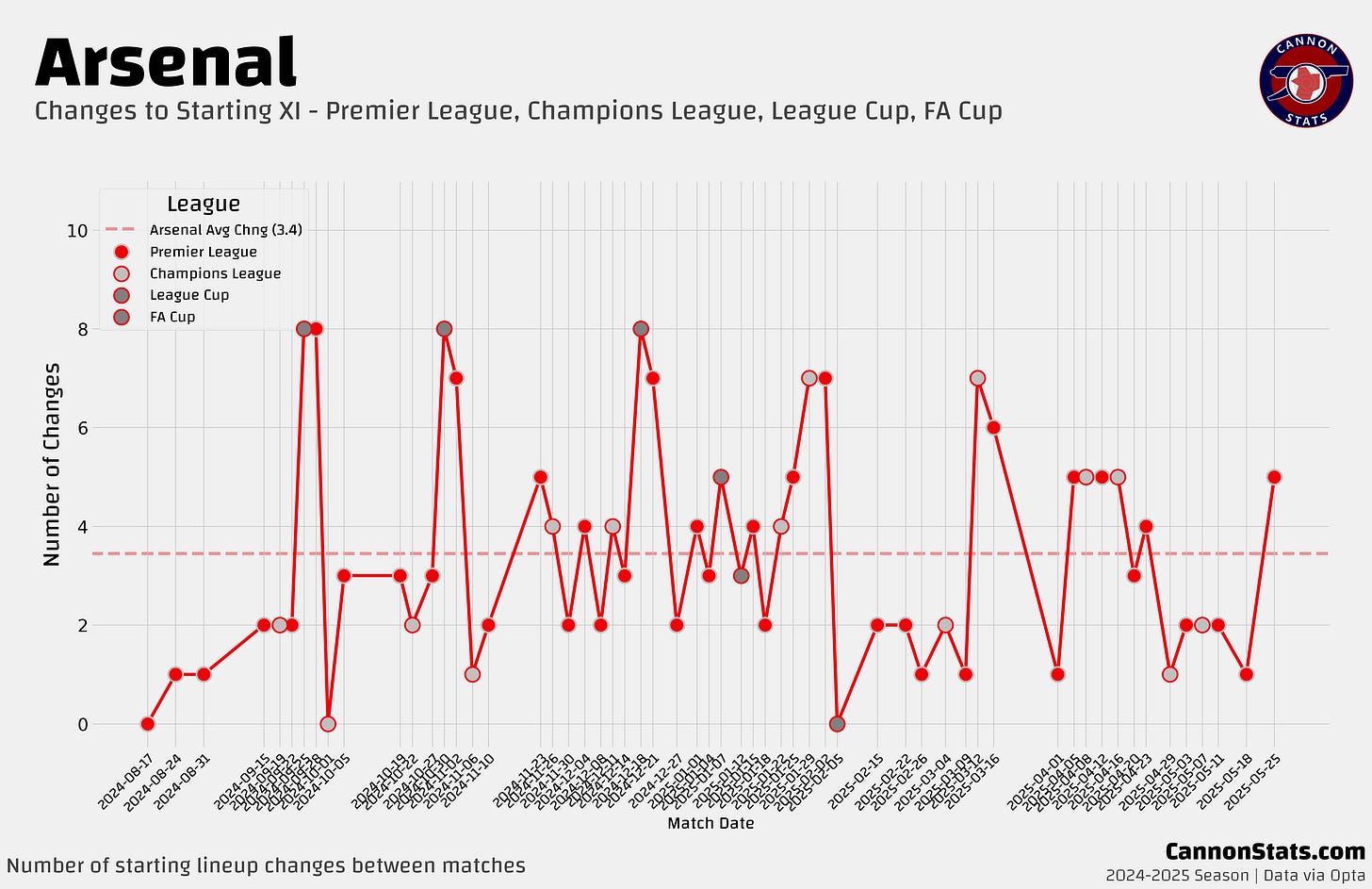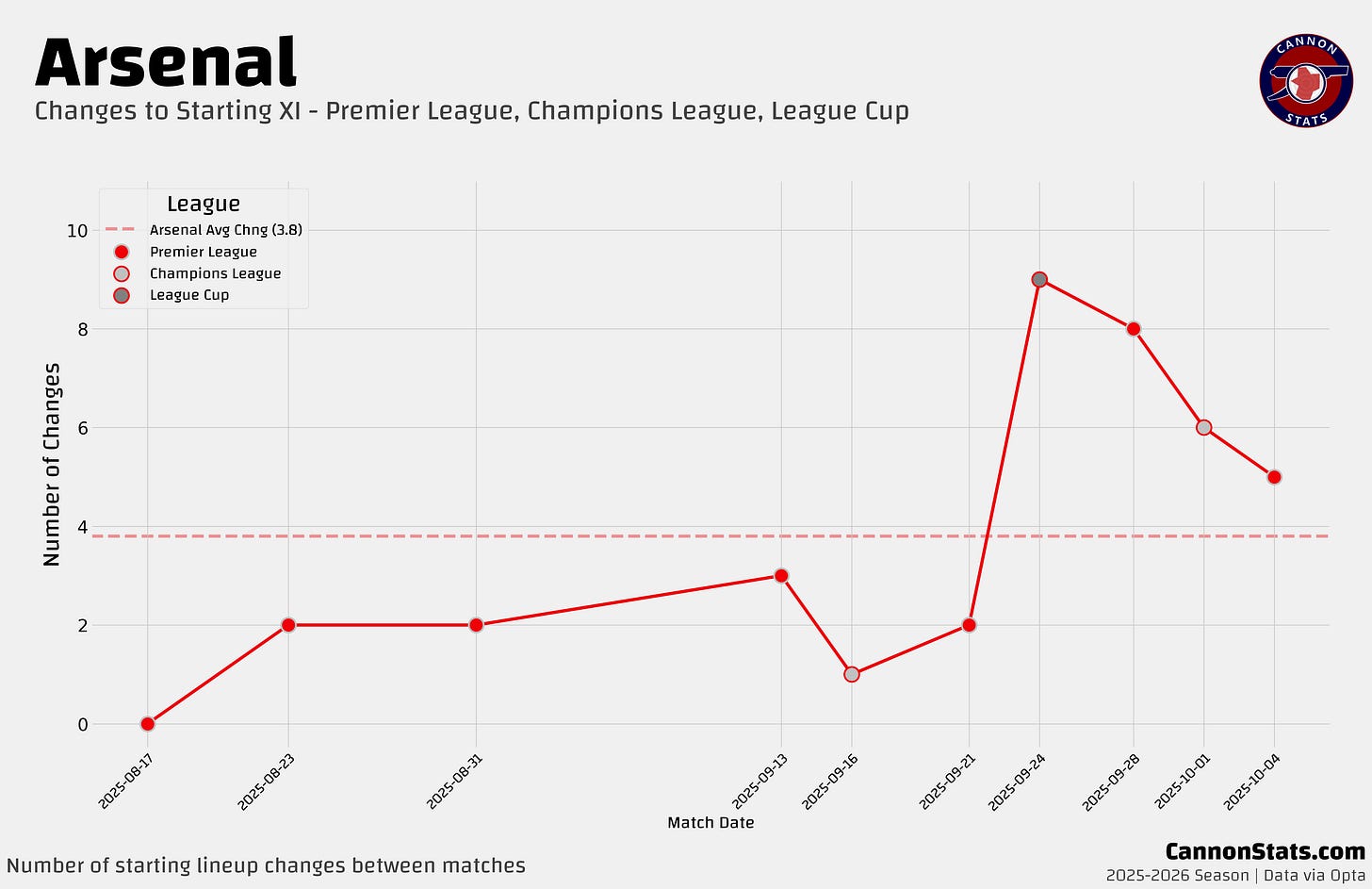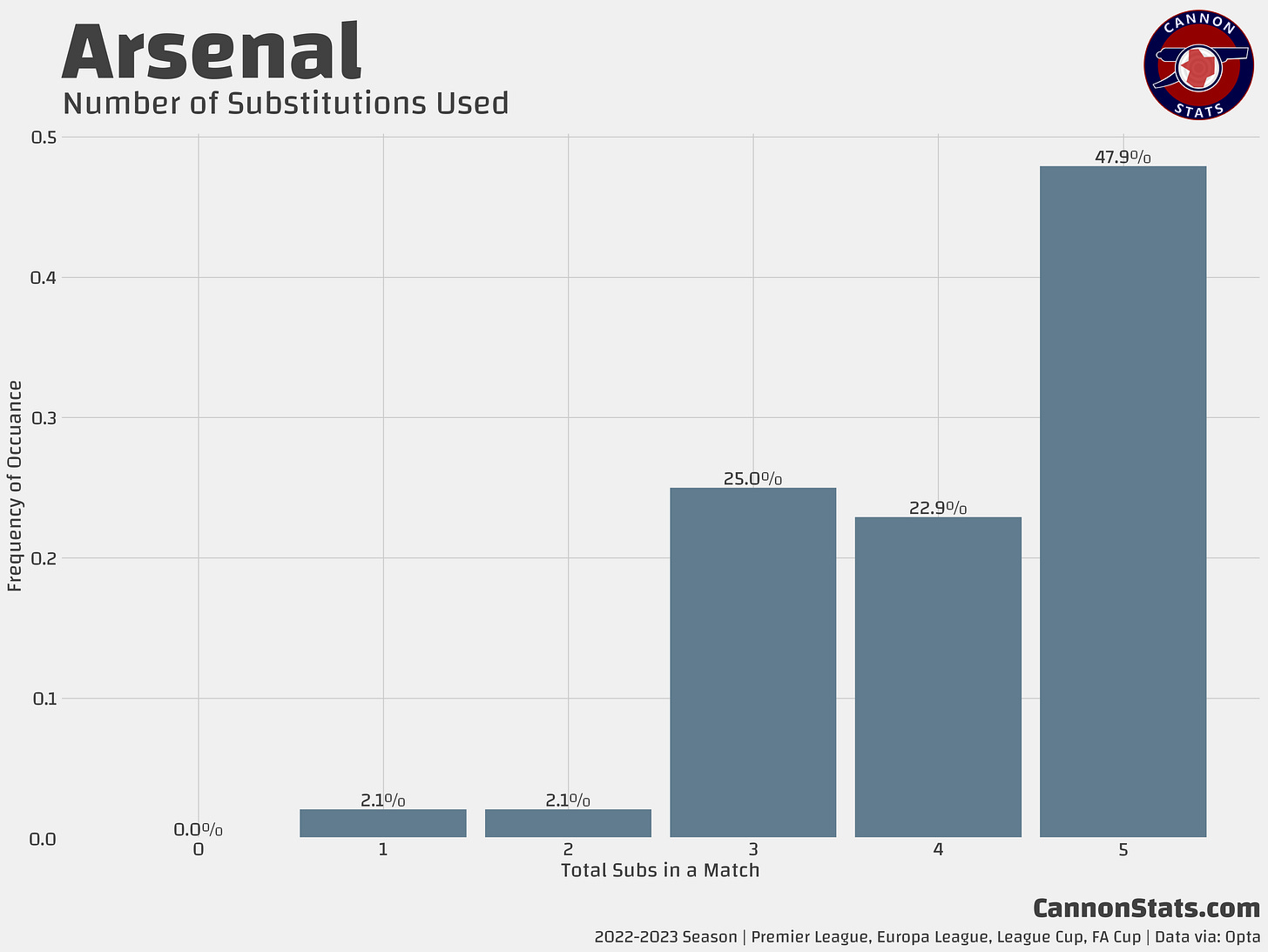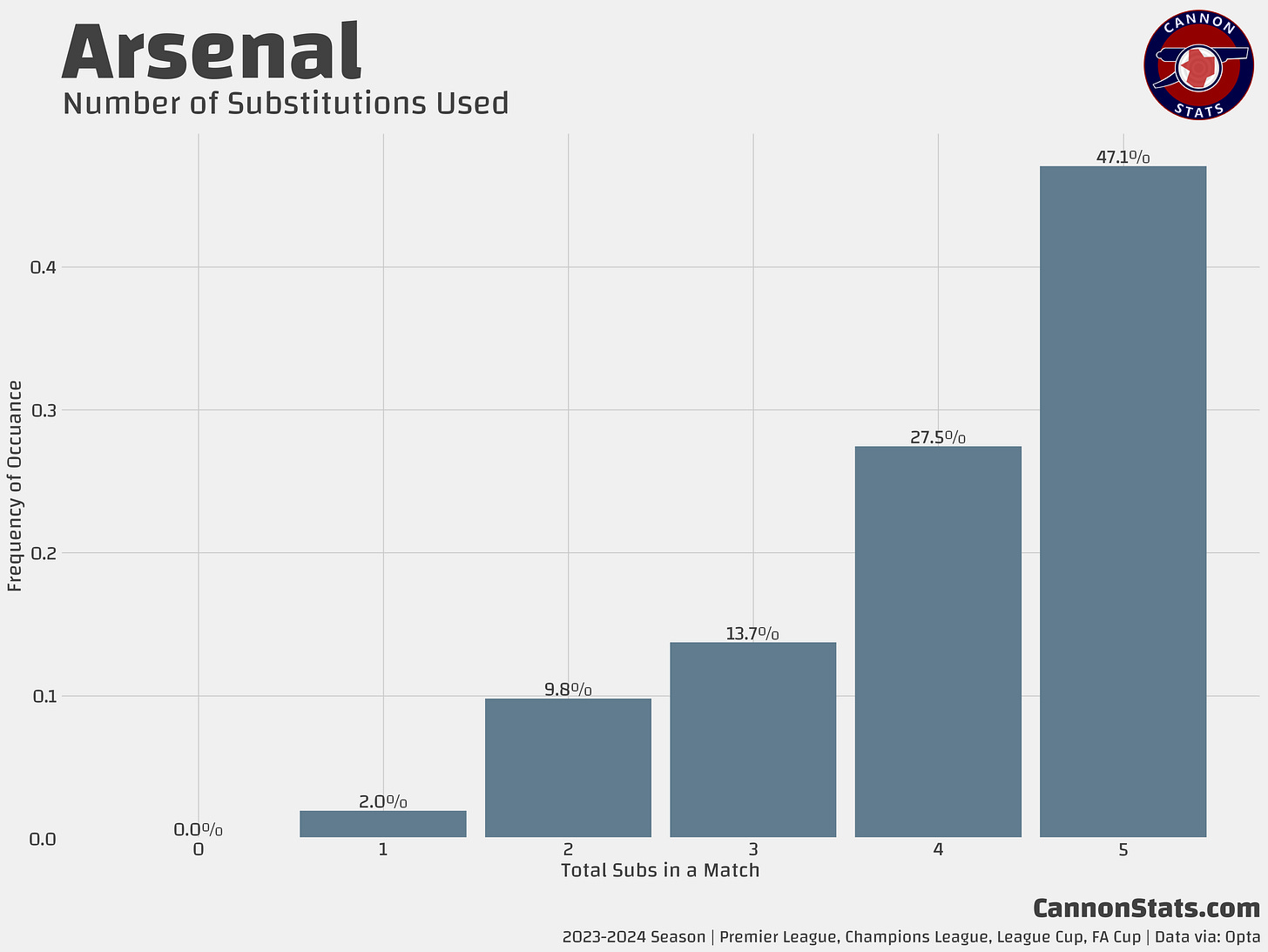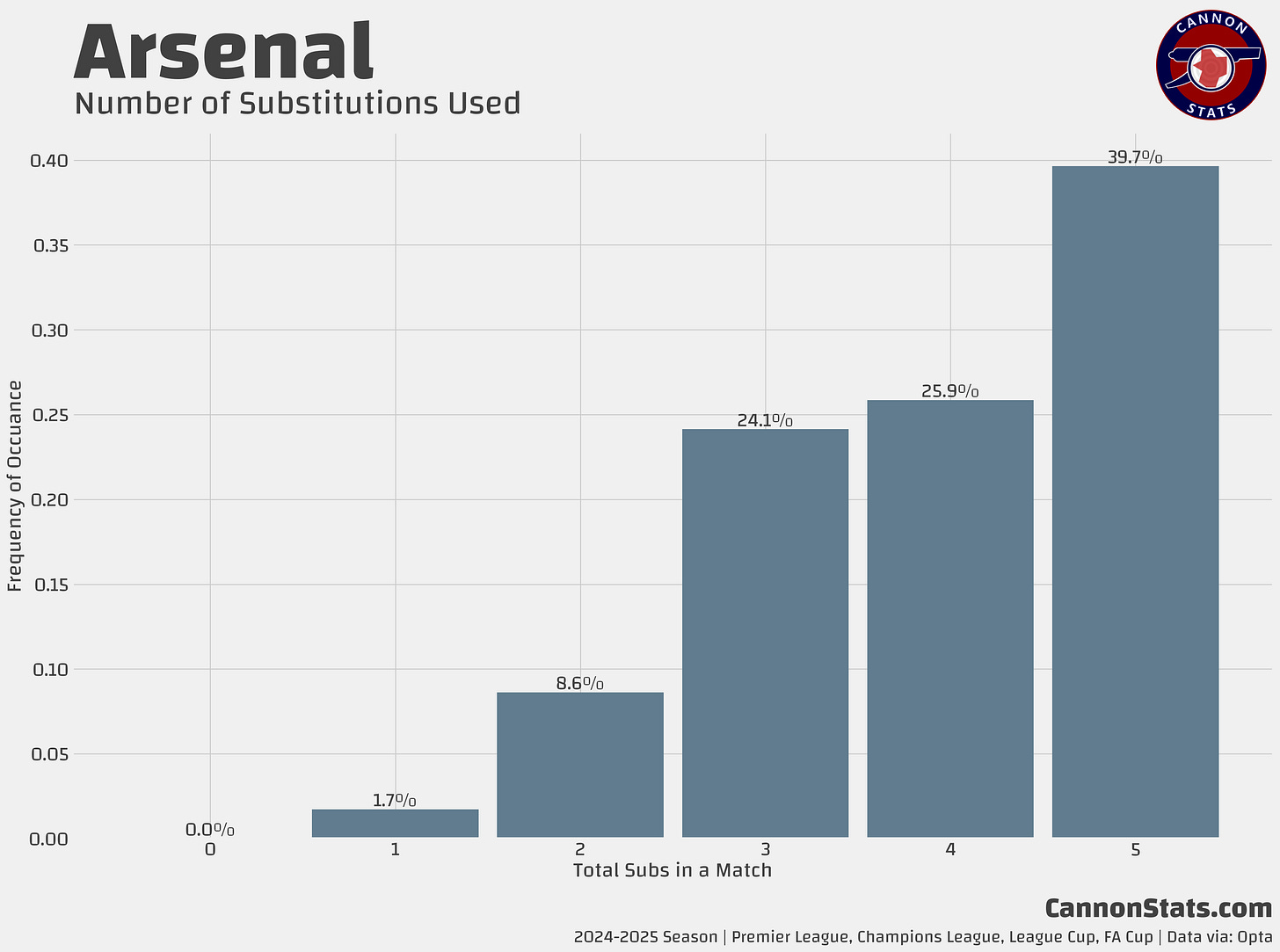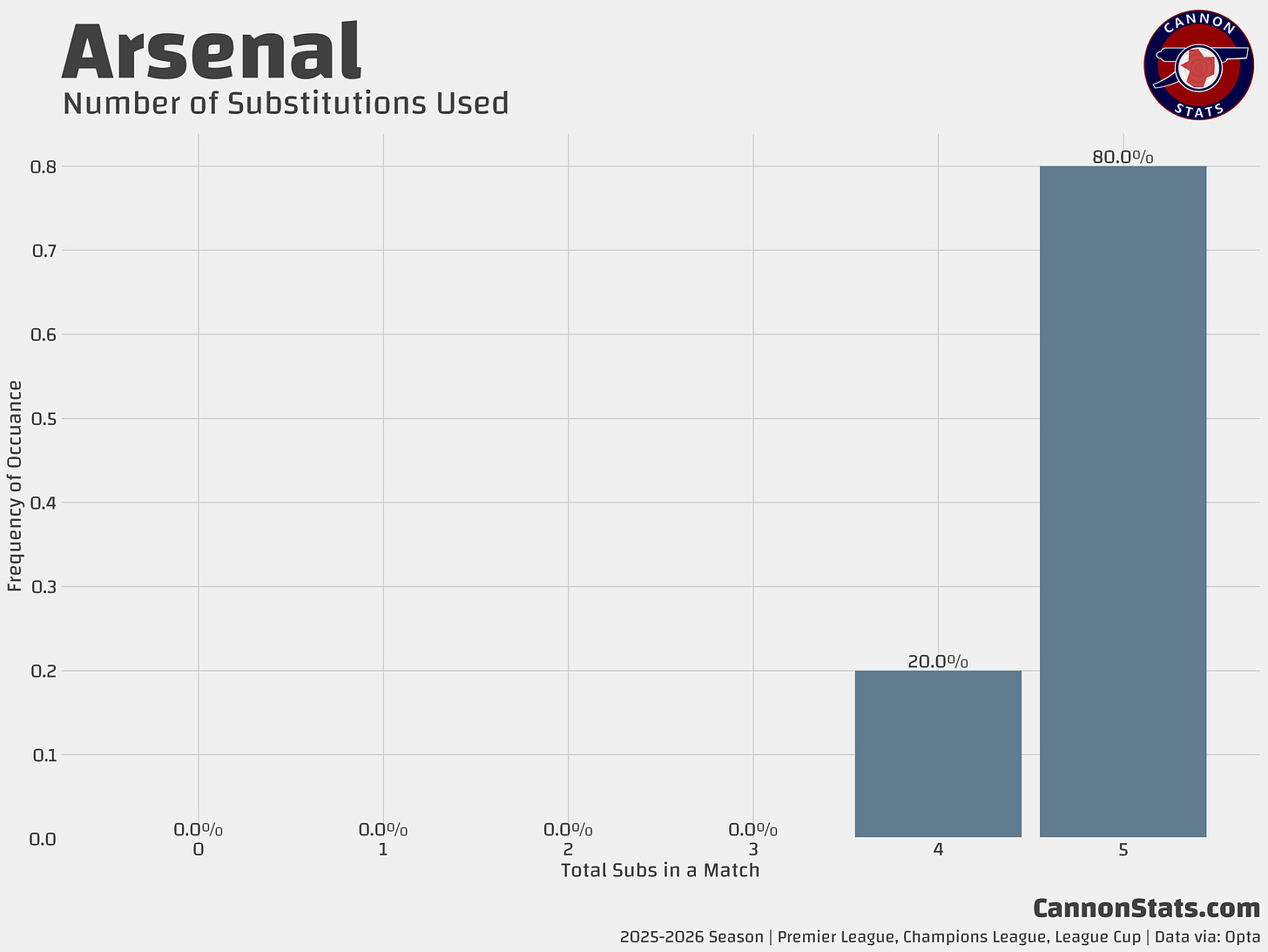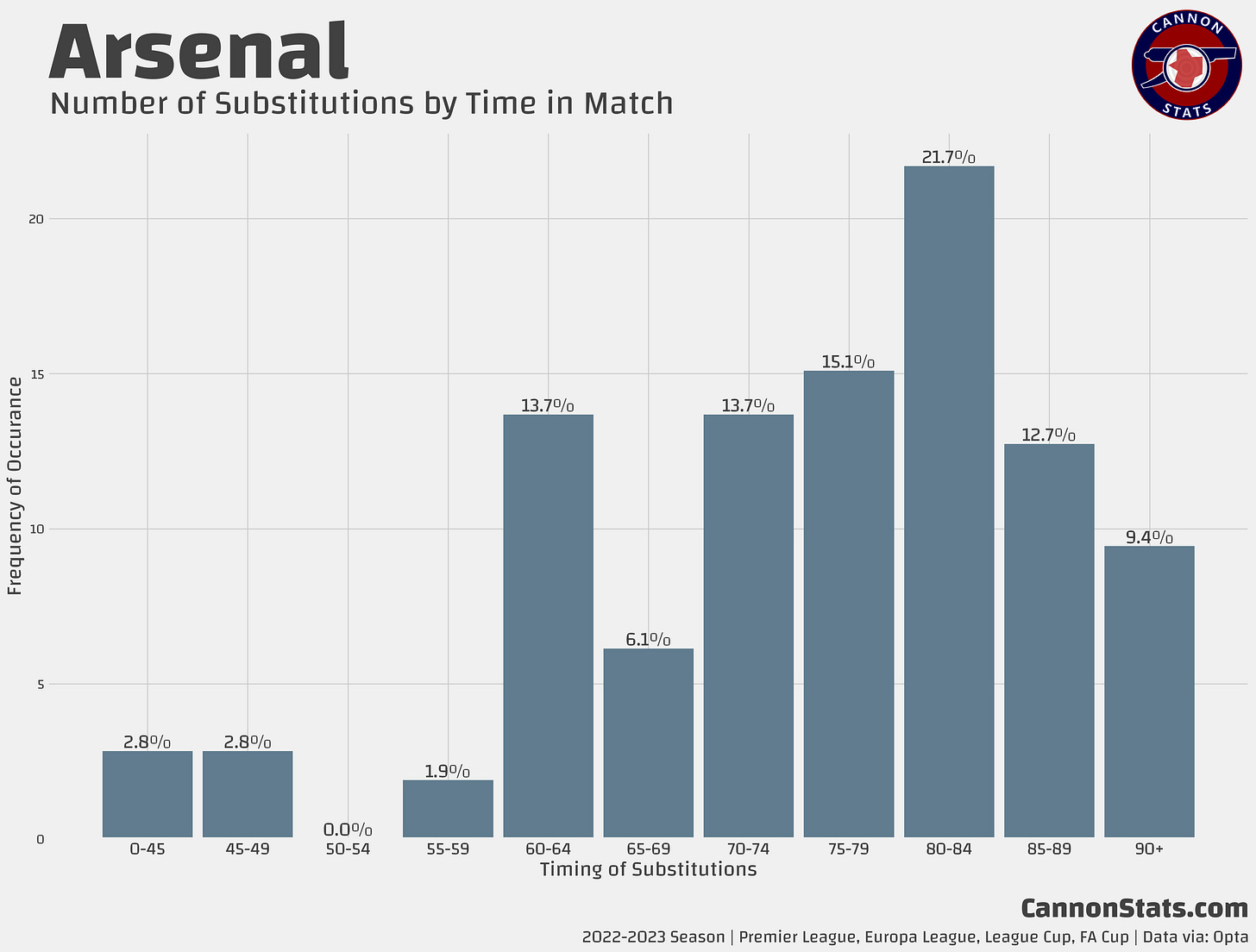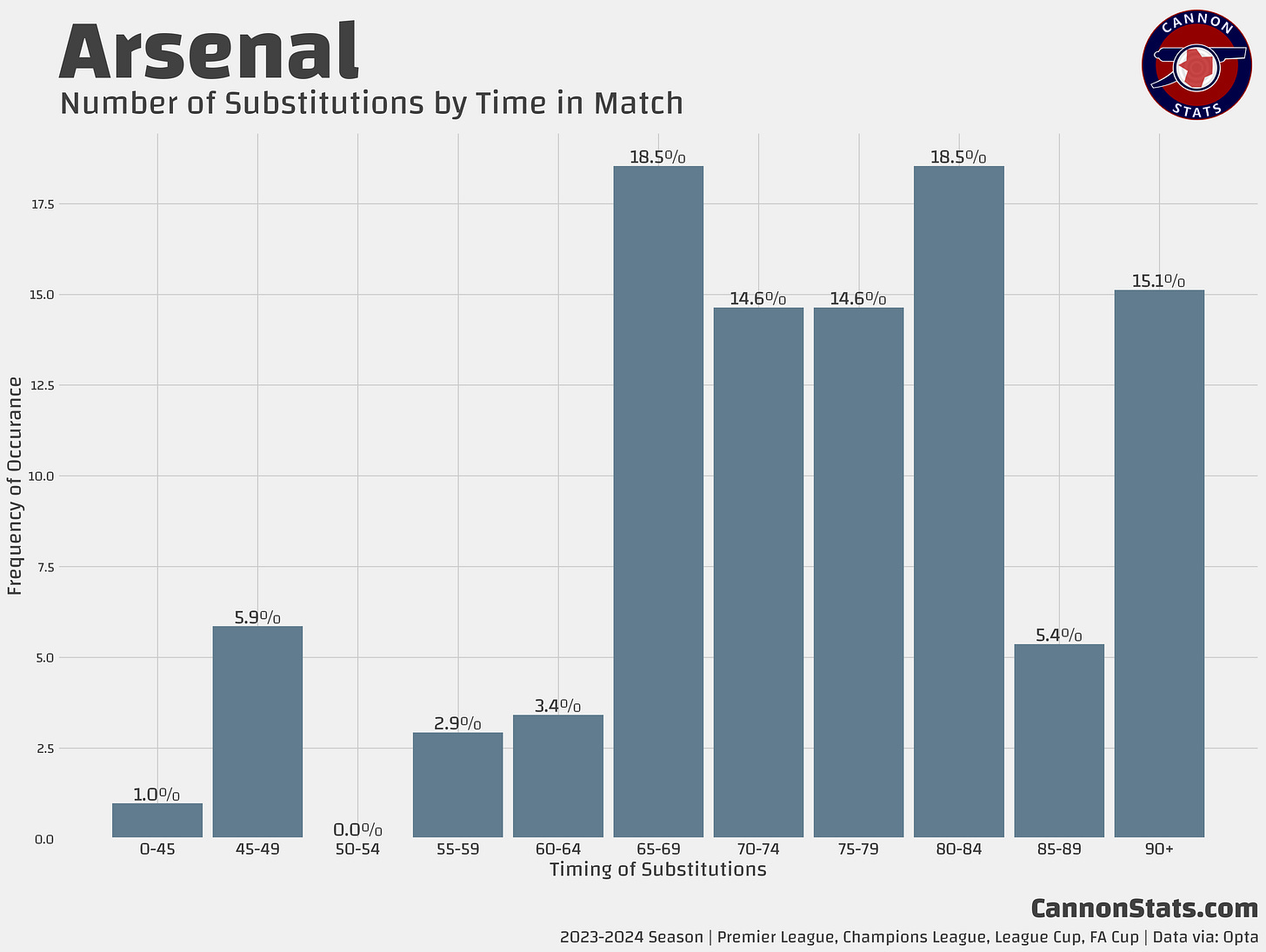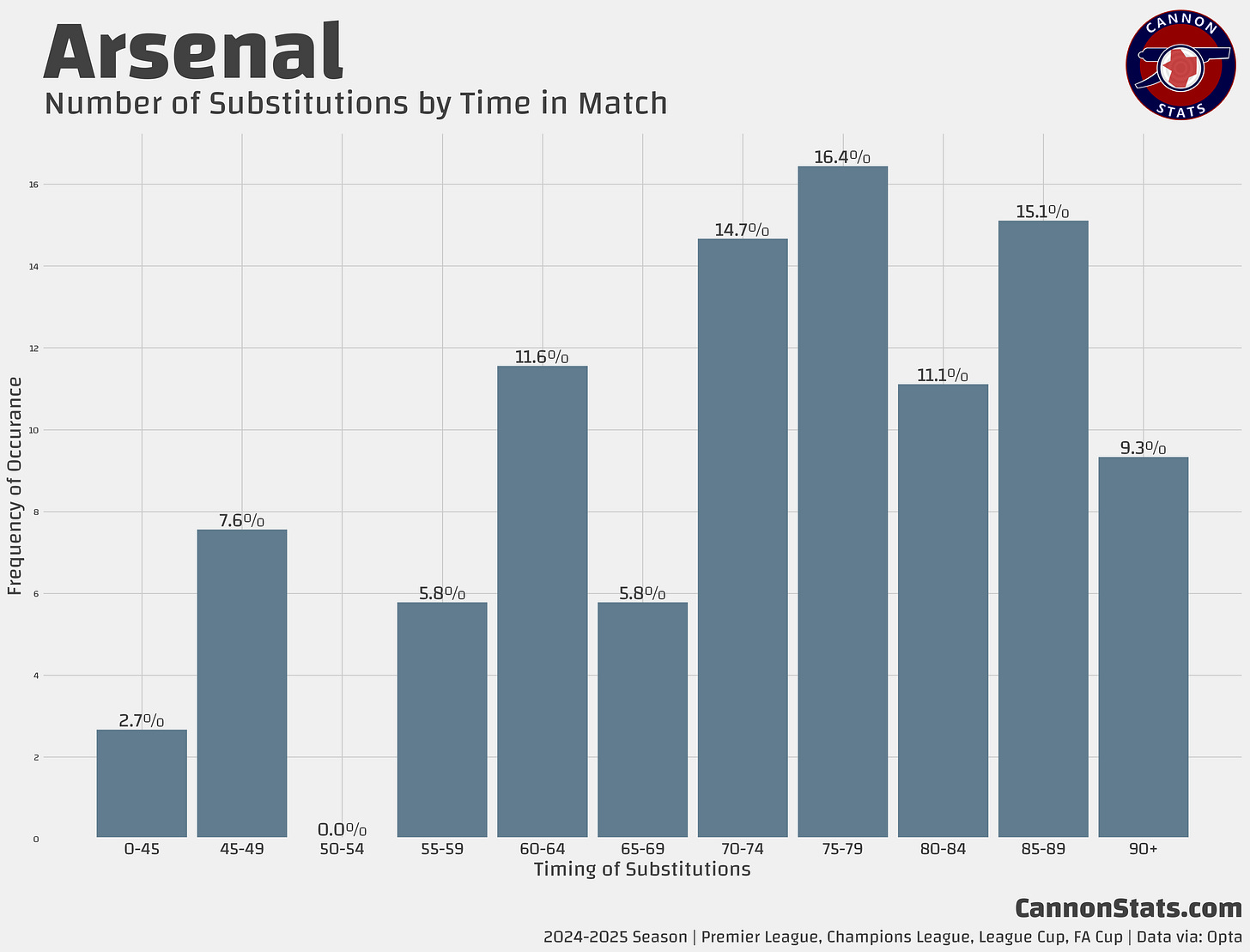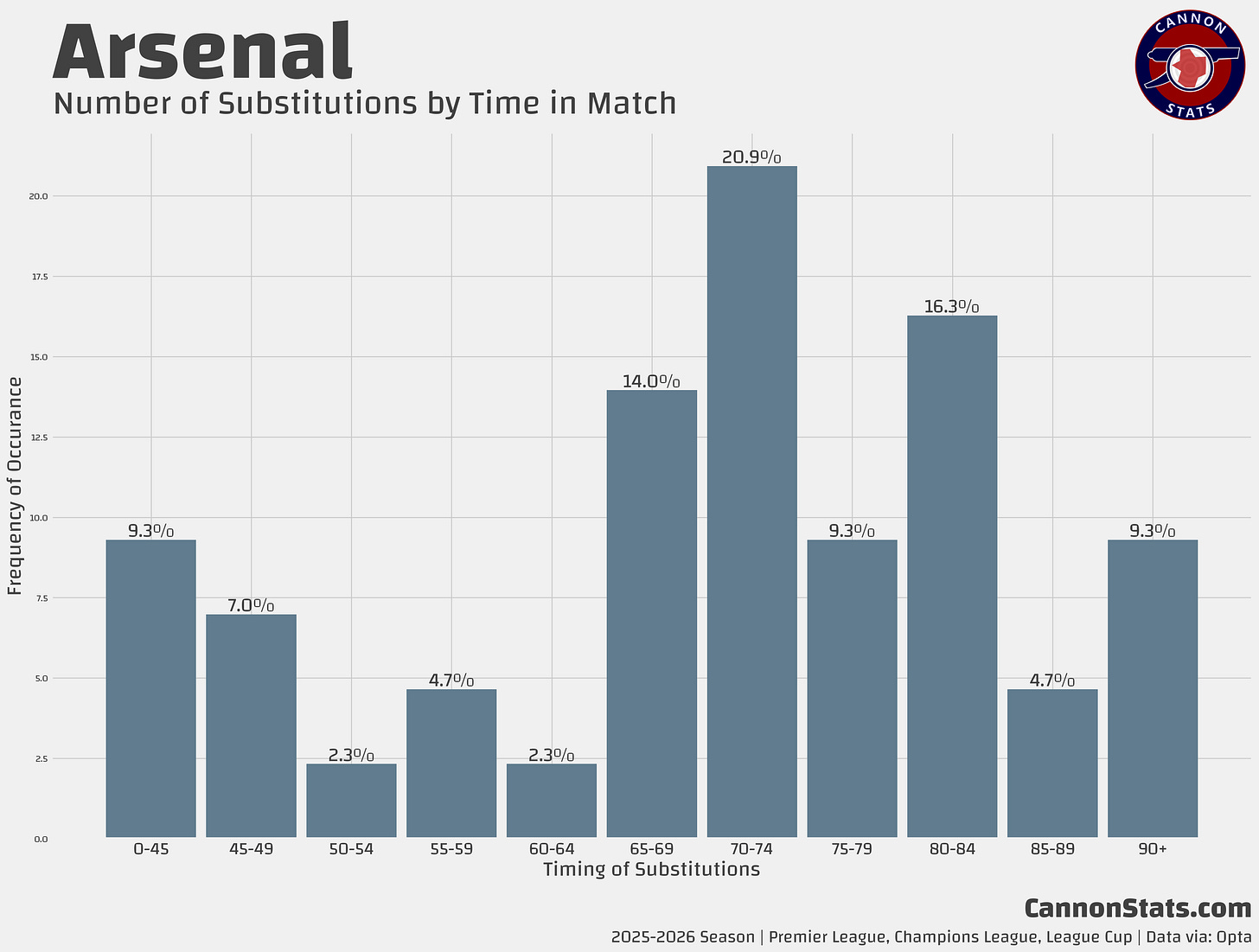Is Mikel Arteta starting to crack rotation?
Fixture congestion being a problem feels like it might be a thing of the past. The 2025/26 squad depth can turn this from a weakness to a strength.
It’s an October Champions League match, the stakes of this match aren’t massive, but it is still an important match to win, and Mikel Arteta has made SIX changes to the Arsenal starting eleven that had played in the Premier League three days earlier. This is backed up with a further five changes when coming back to the Premier League.
This is a situation that I could not have imagined happening outside of a major injury crisis but that is exactly what happened in the last two matches with Arsenal’s last two matches against Olympiacos and West Ham.
After years of fixture pileups and injury crises, is Mikel Arteta finally mastering Arsenal’s rotation puzzle?
With summer 2025 signings of Zubimendi, Eze, Madueke, Mosquera, Norgaard and Gyokeres, Arsenal now boasts “uncharted” depth, allowing Arteta to rotate without suffering a massive drop off in quality.
Evolving View on Squad Size
I find this question fascinating, and it is an area where my opinion has evolved over time.
I have moved from being a diehard you try to max out the talent in a core group of about 13-15 players and back them to stay healthy for enough matches that they can get you the points needed. To my current situation that is much softer; the core group of players is still the most important but minimizing the drop off from the number one option to the number two option is a very important consideration.
No matter how you build a squad, you will face a tradeoff. That is just the reality of a limited budget that teams face. You can take the approach of allocating that budget more towards macing out elite talent, in American sports with hard salary caps this would be the “stars and scrubs” view, or you can take a more even approach and spread the money out evenly through the squad, turning what might have been a big expensive signing into two good players.
Previously, I would have strongly pushed for the first choice and now while I still strongly believe that you need to have key building block players that are elite, I am more willing to spread money from what would have been say two very good players and turning that into three good players.
One of the big driving forces that has had me reconsider my stance is that it just seems like the overall schedule demands on the top teams have gotten progressively tougher and there has not been a corresponding drop off in the intensity of play to make up for it.
The change in the Champions League format from the group system to the single League table was not something that I anticipated making that big of a difference. It was just a couple more matches and the top teams would still be in good shape to advance regardless and while that is true, the jockeying for position on the table with the seeding implications makes could have been dead rubbers something that still matters.
There hasn’t been any reporting on this, but the change in squad building strategy suggests that the team has seen something similar and made a corresponding shift in their philosophy.
Arteta is Changing too
The 2023-24 Season was a situation that fit well overall with the first philosophy. Arsenal had spent big, but they had focused the spending on a few key players bringing in Declan Rice, Kai Havertz, David Raya, and Jurrien Timber (who unfortunately didn’t feature that season due to injury).
These players increased the overall quality in the first eleven and brought the team to a level that was arguably as good as any other team in the world.
Arsenal had relatively good injury luck that season and rode that core group of players hard.
It nearly worked out, with the team winning a record amounts of points and making a Champions League quarter final but they ended up just short.
Over this season, Arsenal averaged just 2.5 changes in the starting eleven per match and the biggest changes came around the FA and League Cup.
Going into 2024-25, there did not seem to be a drastic change in the squad make up, Arsenal brought in Riccardo Calafiori, Mikel Merino, and Raheem Sterling on loan, but the total numbers or depth of the squad didn’t really change much. It was to a certain extent understandable coming off a record season.
This season did not have the same injury luck, and the squad depth was tested severely. When it was possible Arteta tried to stick with his core group of players, but he was often forced into changes due to absences.
Over this season, Arsenal averaged 3.4 changes in the starting eleven per match and the injuries and later prioritizing of the Champions League saw the squad usage increase. Needing to rely on the squad to this extent was not the plan but became a necessity as the season went on.
That brings us to this season. It is still early, and the team has already been hit with injuries, but it does seem that the lessons of last season were learned.
Arsenal have played just 9 matches this season but they have not had a single match where they have used the same lineup in back-to-back matches.
So far this season, Arsenal have made 3.8 changes per match and while some of that has been forced by injury, there has been much more deliberate choices made to cycle players in and out of the lineup.
Not just the starting lineup either
The number of changes in the starting lineup is an important part of rotation but that is not everything.
The other important part of using the squad is the ability to maximize the usage of substitutes. There are five substitutions allowed now and that opens up the possibility of changing nearly half of the team in the course of a match.
I think that there was valid criticism of the way that Arteta used his bench previously and that he did not get the most out of the substitution opportunities that were available to him.
Here is the number of substitutions that Arsenal have made over the last 4 seasons in each match played.
From 2022/23 through 2024/25, Arteta used just three of his substitutions in nearly a third of the matches that Arsenal played. He didn’t use all five substitutions available to him in over 55% of the matches.
It is still early this season, but it is already shaping up to be significantly different with more trust to bring players on off of the bench to give starters a break.
Not only are Arsenal making more substitutions, they are also getting the substitutes on earlier in the match. Here is the distribution of when the team has made substitutions over the last four seasons.
The change is subtle, and it is possible that it could revert back to what it was previously but for substitutions made in the second half (ignoring the early often injury forced subs) 64% this season have come before the 80th minute compared to 57% previously.
Final Thoughts
There is a long way to go in the season, but I am pleased with the early returns. I think that on a match-by-match basis the changes from Premier League to Champions League probably will not continue to be in the 4 to 5 range but given the depth of the team is will not be unreasonable to see 2-4 changes on an ongoing basis.
With the depth added to the squad from summer transfers and the more proactive use of the bench, Arteta’s level of rotation feels sustainable. More than that, it can be a decisive factor in what could make the difference between Arsenal winning one of the big trophies that we crave or not.
The fixture congestion for Arsenal shows no sign of letting up and if Arteta can continue to keep the players healthy, the depth of the squad engaged and sharp, being able to navigate this can turn from a problem to a relative strength that the team has compared to rivals.


